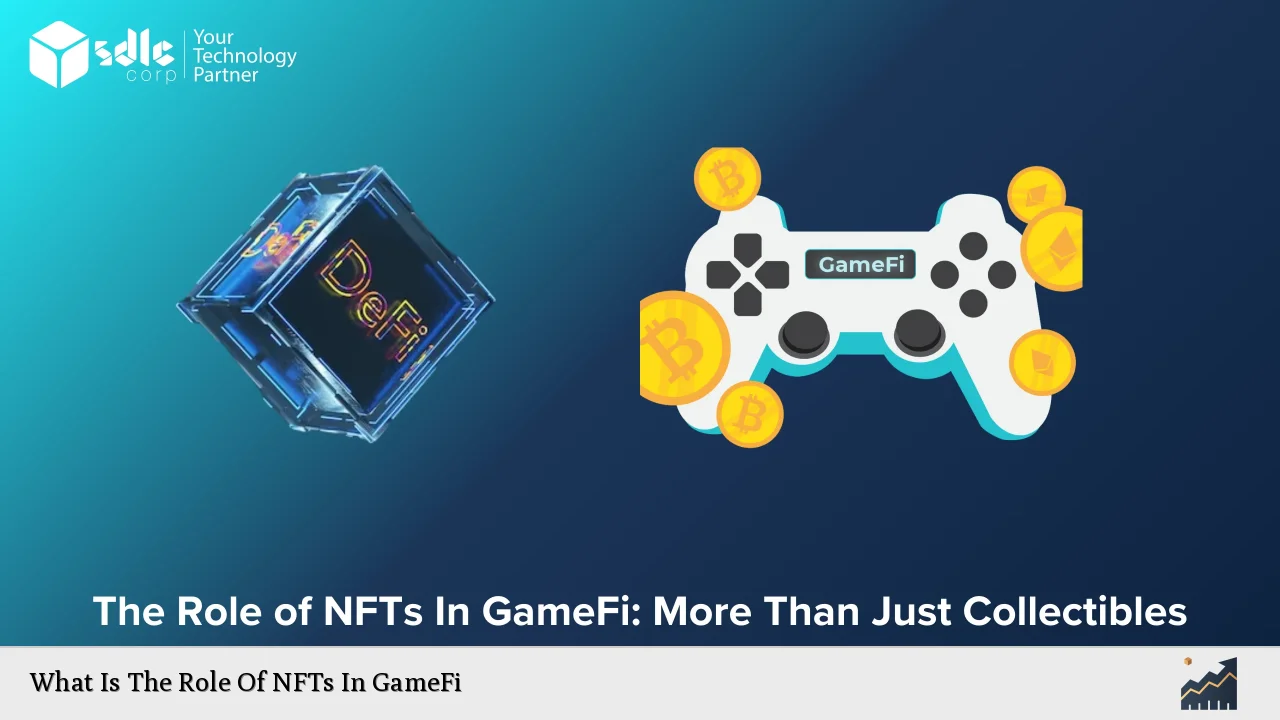The integration of Non-Fungible Tokens (NFTs) into the GameFi ecosystem represents a transformative shift in the gaming industry, merging entertainment with financial opportunities. NFTs enable players to own unique digital assets, fundamentally changing how value is created and exchanged within games. This article explores the multifaceted role of NFTs in GameFi, examining current market trends, implementation strategies, risks, regulatory considerations, and future outlooks.
| Key Concept | Description/Impact |
|---|---|
| True Ownership | NFTs provide players with actual ownership of in-game assets, allowing them to trade, sell, or use these items across different platforms. |
| Decentralized Economy | GameFi creates a player-driven economy where users can earn real money through gameplay, enhancing engagement and retention. |
| Market Growth | The GameFi market is projected to grow significantly, with estimates suggesting it could reach over $301 billion by 2030. |
| Interoperability | NFTs allow for the transfer of digital assets across various games and platforms, increasing their utility and value. |
| Community Engagement | NFTs foster community building through unique collectibles and governance rights, enhancing player involvement in game development. |
Market Analysis and Trends
The GameFi sector is experiencing explosive growth fueled by the increasing adoption of blockchain technology and NFTs. Current statistics indicate that the global GameFi market was valued at approximately $9.6 billion in 2023 and is expected to grow at a compound annual growth rate (CAGR) of 25.4% through 2033. By 2024, active GameFi players are projected to surpass 50 million, significantly increasing from around 20 million in 2023. This surge reflects a growing interest in play-to-earn models that combine gaming with financial incentives.
Key Trends
- Investment Surge: Venture capital investment in GameFi is expected to exceed $2 billion in 2024, up from $1.2 billion in 2023.
- Technological Advancements: Approximately 80% of GameFi platforms are anticipated to adopt Layer 2 solutions for enhanced scalability by 2024.
- Metaverse Integration: By the end of 2024, it is predicted that 35% of all Metaverse platforms will incorporate GameFi elements, creating a more interconnected gaming ecosystem.
Implementation Strategies
To effectively integrate NFTs into GameFi projects, developers must consider several strategies:
- Creating Unique Digital Assets: Each NFT should represent a distinct in-game item or character, ensuring scarcity and authenticity. This can be achieved through blockchain technology that verifies ownership and limits the number of available items.
- Enhancing Player Ownership: Developers should design games that empower players with full control over their assets. This includes enabling trading on secondary markets and ensuring that NFTs cannot be altered or removed by developers.
- Building a Decentralized Marketplace: Establishing a secure platform for players to buy, sell, or lease their NFTs can create additional revenue streams and enhance player engagement.
Risk Considerations
While the potential for profit in GameFi is significant, several risks must be acknowledged:
- Volatility of NFT Prices: The value of NFTs can fluctuate dramatically based on market trends and player demand. Investors should be cautious about potential losses.
- Regulatory Uncertainty: As governments worldwide begin to regulate cryptocurrencies and digital assets, changes in legislation could impact the viability of GameFi projects.
- Security Risks: The decentralized nature of blockchain technology does not eliminate the risk of hacks or fraud. Players must ensure they use secure wallets and platforms.
Regulatory Aspects
The regulatory landscape for NFTs and GameFi is still evolving. Key considerations include:
- Compliance with Securities Laws: Depending on how NFTs are structured, they may be classified as securities under certain jurisdictions. Developers must ensure compliance with relevant regulations to avoid legal issues.
- Consumer Protection Laws: As players invest real money into games, regulations aimed at protecting consumers from fraud or misleading practices may become more stringent.
- Tax Implications: Players earning income through NFT transactions may face tax obligations that vary by region. Understanding these implications is crucial for investors.
Future Outlook
The future of NFTs in GameFi looks promising as technological advancements continue to shape the industry:
- Increased Mainstream Adoption: As awareness grows about the benefits of true asset ownership through NFTs, more players are likely to engage with GameFi platforms.
- Evolution of Gameplay Mechanics: Developers are expected to innovate gameplay experiences that leverage NFTs for enhanced interaction and monetization opportunities.
- Expansion into New Markets: The global reach of GameFi will likely expand as mobile gaming continues to grow, particularly in regions with high smartphone penetration.
Frequently Asked Questions About What Is The Role Of NFTs In GameFi
- What are NFTs?
NFTs (Non-Fungible Tokens) are unique digital tokens stored on a blockchain that represent ownership of specific assets or items. - How do NFTs enhance gaming?
NFTs provide players with true ownership of their in-game assets, allowing them to trade or sell these items outside the game environment. - What is the potential market size for GameFi?
The GameFi market is projected to reach over $301 billion by 2030, driven by growing interest in play-to-earn models. - Are there risks associated with investing in NFTs?
Yes, risks include price volatility, regulatory uncertainty, and security vulnerabilities related to blockchain technology. - How can developers ensure NFT security?
Developers should implement robust security measures such as secure smart contracts and regular audits to protect against hacks. - What role does regulation play in GameFi?
Regulation impacts how NFTs are classified (e.g., as securities), which can affect compliance requirements for developers and investors. - Will traditional gaming adopt NFT technology?
As awareness grows about the benefits of NFTs, traditional gaming may increasingly explore integrating similar technologies into their ecosystems. - What innovations can we expect in the future?
Future innovations may include enhanced interoperability between games and expanded functionalities for NFTs within gaming environments.
The role of NFTs in GameFi is reshaping not only how games are played but also how value is perceived within digital ecosystems. As this sector continues to evolve, both players and investors should remain informed about emerging trends and potential challenges while exploring opportunities within this dynamic landscape.

